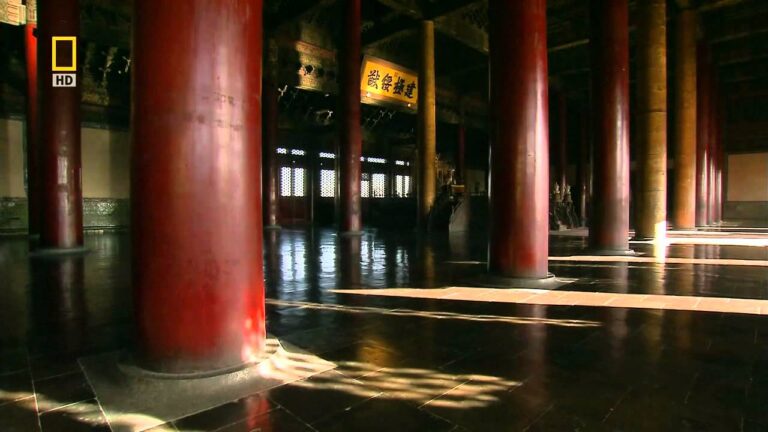Discovering the Enchanting Interiors of the Forbidden City
For centuries, the Forbidden City has been the center of power in China. The majestic architecture, sprawling grounds, and intricate details of the palace have captivated visitors from all walks of life. But what lies beyond the grandiose façade of the Forbidden City walls?
The Palace of Heavenly Purity
The emperor’s living quarters, the Palace of Heavenly Purity, is a testament to the extravagance of imperial China. The brilliant shades of red and gold that adorn the walls and ceilings, intricate carvings of dragons, and the shimmering tile floors are all awe-inspiring. Walking through the rooms, one cannot help but feel the heavy weight of history.
The Hall of Supreme Harmony
The Hall of Supreme Harmony is perhaps the most iconic room in the Forbidden City. Featuring a massive platform, adorned with colorful dragon sculptures and chimes that catch the warm breezes blown through the room, it’s hard not to be in awe of its grandeur. The stone animals are a testament to the meticulous work and focus on detail that went into designing every aspect of the palace.
The Imperial Garden
The Imperial Garden, although not as grandiose as the previous areas, is an oasis of serenity and calm. The carefully tended trees and flowers, meandering paths, and the small ponds provide a respite from the hustle and bustle of the Forbidden City itself.
Understanding the Significance of the Forbidden City Interiors
Beyond the physical beauty of the spaces, every room, hallway, and corner of the Forbidden City is imbued with meaning and significance. The furnishings, color scheme, and layout all have symbolic importance.
The Importance of Color
The colors used in the palace interiors are no coincidence. Red and yellow were the most commonly used shades, symbolizing power and the emperor’s authority. Black, white, and blue were also used, but less frequently. Each color also had specific significance. For example, black signifies water and represents the north, while white represents metal and the west.
The Significance of Layout
The furniture, walls, and entire layout of the Forbidden City functioned as a way to express the emperor’s power. The throne was notably the focal point of the Hall of Supreme Harmony, emphasizing the emperor’s rule over his people. Every aspect of the palace, from the location of the courtyards to the placement of the trees, was meant to show his dominance and authority.
Conclusion
The Forbidden City is not simply a tourist attraction; it is a symbol of China’s long and complex history. Exploring the interiors of the palace provides a glimpse into the significance and intricacy of imperial China’s design and culture.
- Every room, hallway, and corner of the Forbidden City is imbued with meaning and significance.
- Red and yellow were the most commonly used shades in the palace interiors, symbolizing power and the emperor’s authority.
- The furniture, walls, and entire layout of the Forbidden City functioned as a way to express the emperor’s power.
- The Forbidden City is not simply a tourist attraction; it is a symbol of China’s long and complex history.
